Description
Encaje yu (encaje de aguja), encaje kapi´i (encaje de paja), es la denominación más antigua y está en desuso, proviene de la paja usada para el tamaño de la malla, el mismo nombre y técnica se registra en Panamá. A principios de la década de 1990 se realizaba utilizando como medida para la malla una espina de coco y como aguja, la espina perforada en la parte más ancha. Como encaje de aguja se registra también en diversos países de América.
Este encaje cuya base es la malla de pescar sería el más antiguo, pues existen registros, que las nativas lo utilizaban como parte de la vestimenta denominada typói uniendo dos telas de algodón en la parte del hombro. La malla con forma de rombos es elástica. La más utilizada es la cuadrada que no es elástica. Ambas se rellenan con el punto arroz o arpillera con el cual se obtiene toda la diversidad de diseños que la imaginación y la creatividad lo permiten.
Se registraron diseños zoomorfos, fitomorfos y antropomorfos. Es una actividad femenina, pero en los últimos años también la realizan varones. La denominación de los diseños se hace en guaraní o en castellano como: mbõi pire (piel de víbora); guasu (ciervo); ñandú pysã (pie de avestruz), mainumby (mariposa), ryguasu (gallina), rosa, claveles, ángeles, paloma, arasá poty (flor de guayo), punto arroz, además de realizar cuadrados, rombos, triángulos, entre otros.
Esta artesanía requiere muy poca inversión, sólo se necesita hilo, aguja y para realizar el bordado se coloca la red en un bastidor de madera. Generalmente se utiliza el hilo crudo o blanco, últimamente utilizan hilos de colores especialmente para la vestimenta. Su uso principal es para la mantelería y adornos domésticos, se elaboran mantillas, blusas, polleras, puntillas, randas y apliques para vestidos o totalmente confeccionados para bodas, fiestas o uso diario.
En Carapeguá Departamento de Paraguarí y en Yataity, Departamento del Guairá, antiguamente se hacía en varias ciudades y en el área rural. Se puede adquirir además de las comunidades mencionadas en las tiendas de artesanía de Asunción. Fue declarado Patrimonio Cultural Inmaterial de Carapeguá por Ordenanza Municipal N° 05/2022.
English
Yu lace or kapi’i
Yu lace (needle lace) and kapi’i lace (“straw lace”), are the oldest names for this lace, but it is no longer in use. It comes from the straw used for the size of the mesh, and the same name and technique are recorded in Panama. At the beginning of the 1990s, it was made using a coconut thorn as a measure for the mesh and a thorn perforated at the widest part as a needle. It is also recorded as needle lace in various countries in the Americas.
This lace, which is based on fishnet, is probably the oldest, as there are records that the natives used it as part of their clothing, known as typói, by joining two cotton fabrics at the shoulder. The diamond-shaped mesh is elastic. The most commonly used is the square mesh, which is not elastic. Both are filled with rice stitch or hessian, which is used to obtain as many different designs as imagination and creativity allow. Zoomorphic, phytomorphic and anthropomorphic designs were recorded. It is a female activity, but in recent years it has also been carried out by men.
The designs are named in Guaraní or Spanish: mbõi pire (snake skin); guasu (deer); ñandú pysã (ostrich foot), mainumby (butterfly), ryguasu (hen), rose, carnations, angels, dove, arasá poty (guayo flower), rice stitch, as well as squares, rhombuses, triangles, among others. This handicraft requires very little investment, only thread and needle are needed, and to make the embroidery, the net is placed on a wooden frame. Generally, raw or white thread is used, but more recently coloured threads have been used especially for clothing. Its main use is for table linen and domestic ornaments, they make blankets, blouses, skirts, lace, randas and appliqués for dresses or completely made up for weddings, parties or daily use.
In Carapeguá, Department of Paraguarí and in Yataity, Department of Guairá, it was formerly made in several towns and in rural areas. It can be purchased in addition to the communities mentioned above in handicraft shops in Asunción. It was declared Intangible Cultural Heritage of Carapeguá by Municipal Ordinance N° 05/2022.

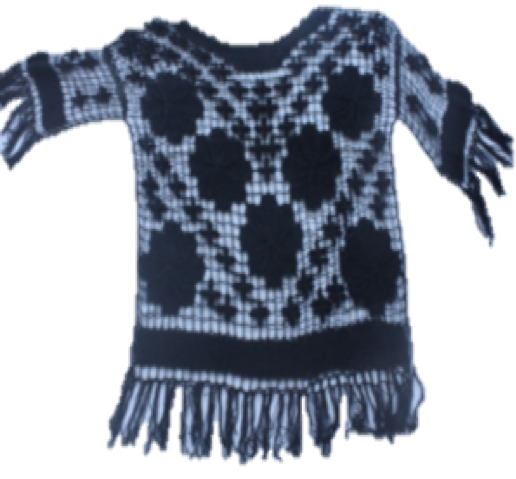
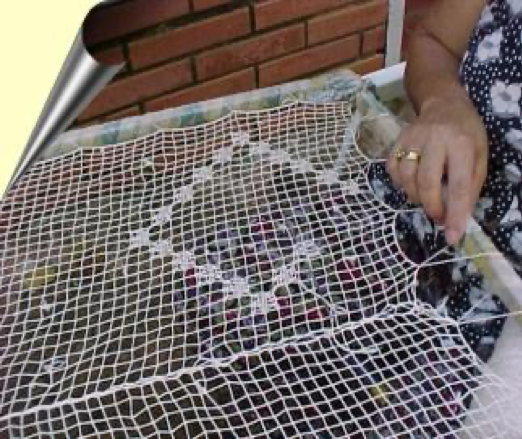
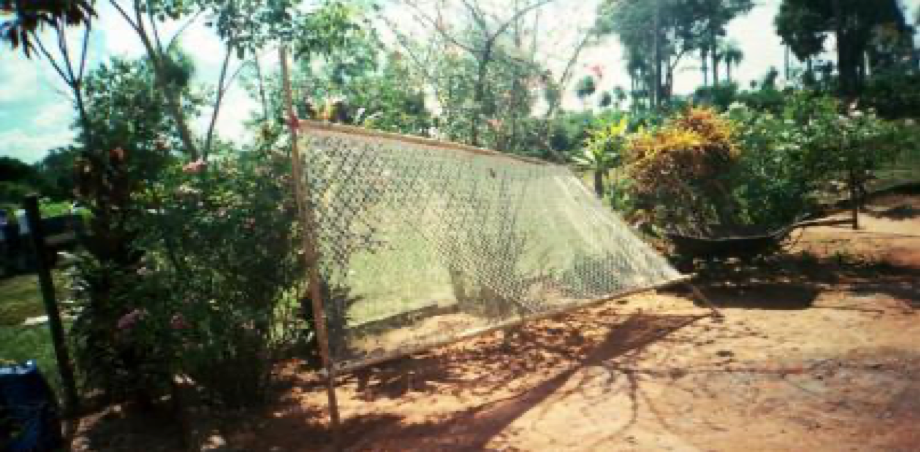
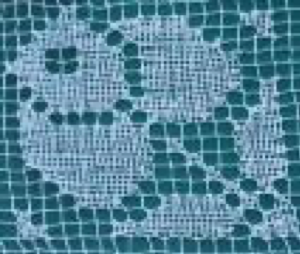
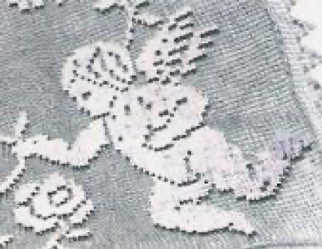
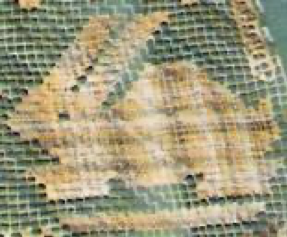
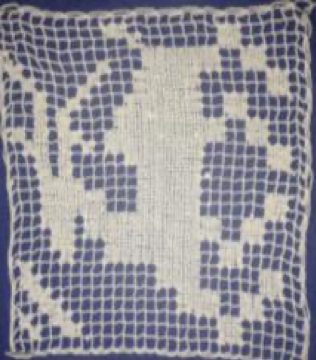
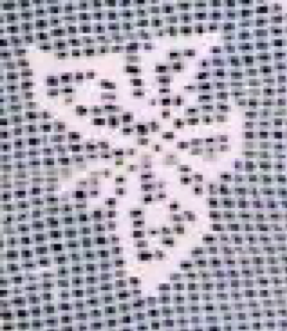
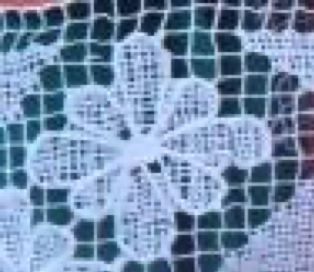
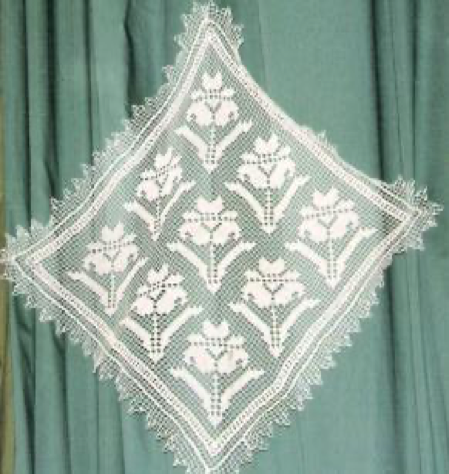
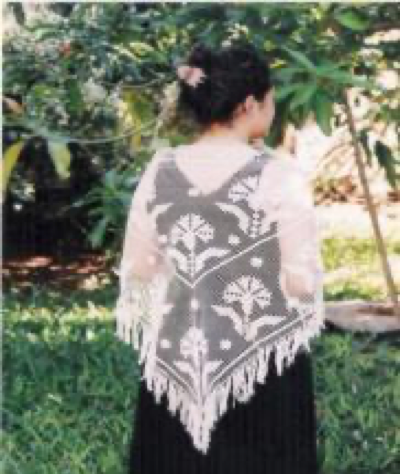
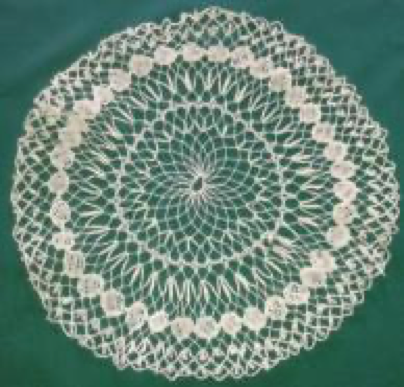
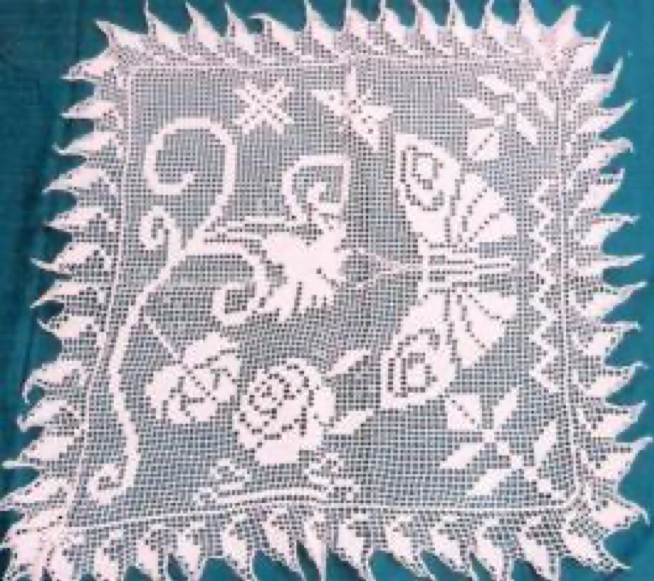
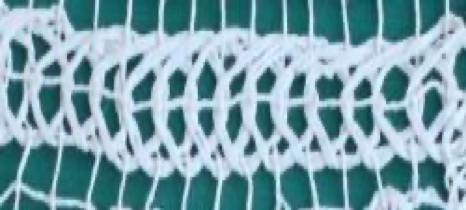
Reviews
There are no reviews yet.